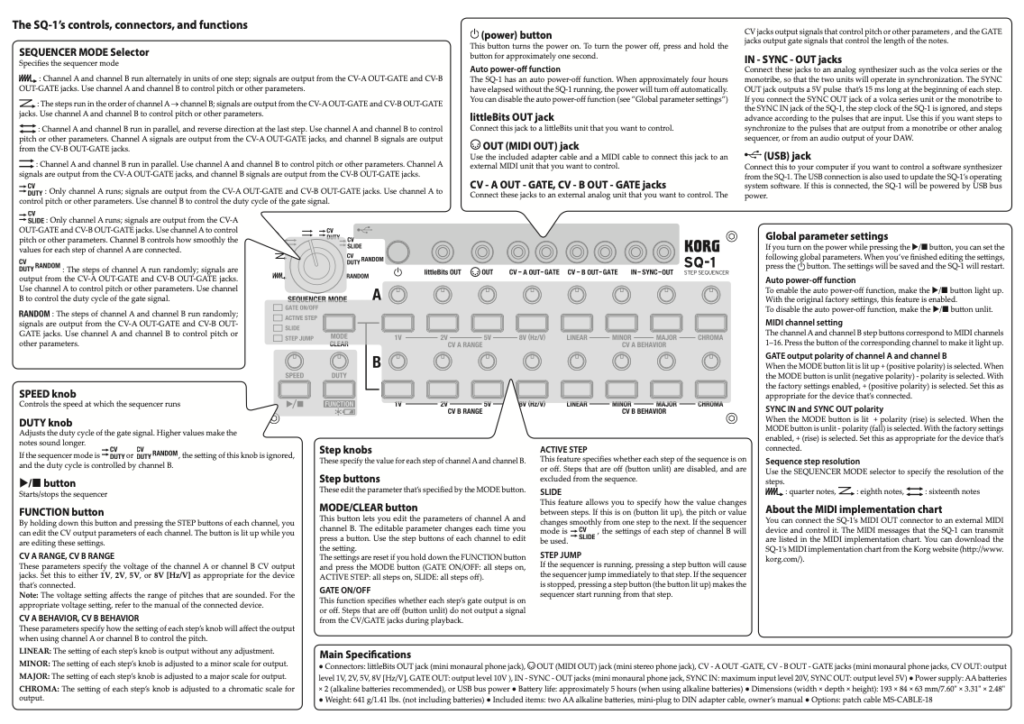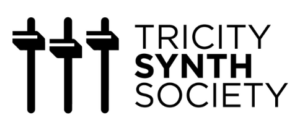Korg SQ-1 Step Sequencer
The SQ-1 sequence provides two channels (A and B) of 8-step sequences that can operate consecutively, or be used in a variety of patterns and time signatures.
For example, you can run A and B following each other to function as a single 16-step sequencer, or use A and B to control different parameters as they run in parallel. For example, A can play an 8 step melody while B can play an 8 step harmony or counterpoint. Click to download user guide.

0:22 Using function button to change scales
0:40 Using mode dial to change from two 8 step sequences to single 16 step sequencer
0:55 Using function button to change voltage/octave ranges (1V, 2V, 5V ranges).
1:14 Using Step mode (for tuning/playing individual notes, or starting a sequence from a selected step)
1:28 Using Active Step mode for (de)activating notes or changing time/loop signatures.
1:54 Creating two 8-step sequences using 2 VCOs (polyphony)
The 2 x 8 step buttons can be used in the usual way to turn notes on/off, and above each button you have a dial to set the pitch of the note/step.
You can also use the MODE button to switch their function, opening up possibilities such as letting you “perform” the sequence itself (as if the buttons were piano keys).
“Active Step” mode lets you skip steps mid-way through a sequence, and “Step Jump” lets you instantly play just the step that you press, producing irregular rhythms or effects that are reminiscent of short loops. “Slide” produces an effect in which steps are connected smoothly.
By holding down the FUNCTION button, you can then select your scale type (Major, Minor, Chromatic, or Linear/un-quantized notes). By holding the FUNCTION button down, you can also select CV Range (your octave range: 1 Octave; 2 Octaves; or 5 Octaves). Tuning knob response become more or less sensitive based on CV range

















